1 In order to initially observe the relationship between the
1)
In order to initially observe the relationship between the two variables we can use a
a. histogram
b. bar graph
c. scatter plot
d. pie chart
2)
In regression analysis, the expression y = (0) + (1) + is called the
Select one:
a. regression coefficient
b. correlation equation
c. estimated regression equation
d. regression model
3)
In regression analysis, the variable that is being predicted is
a. called the dependent variable
b. called the independent variable
c. called the intervening variable
d. usually denoted as x
4)
In the regression model, (0) and (1) are called the
Select one:
a. estimates
b. parameters of the model
c. dependent variables
d. independent variables
5)
Regression analysis is a statistical procedure for developing a mathematical equation that describes how
Select one:
a. one independent and one or more dependent variables are related
b. several independent and several dependent variables are related
c. one dependent and one or more independent variables are related
d. none of the above
6)
b(0) is
Select one:
a. the estimate for 0
b. the y-intercept of the estimated regression equation
c. both a and b
d. none of the above
7)
b(1) is
Select one:
a. the y-intercept of the estimated regression equation
b. the slope of the estimated regression equation
c. always a positive number
d. none of the above
8)
The differences between the data points and the estimated regression line are called the
Select one:
a. residuals
b. parameters
c. coefficients
d. none of the above
9)
The equation y(hat) = b(0) + b(1)x is called the
Select one:
a. regression model
b. population model
c. estimated regression equation
d. parameter
10)
The method used to find the estimated linear regression equation is called
Select one:
a. correlation
b. the least squares method
c. significance testing
d. none of the above
11)
If the coefficient of determination is 0.9, the percentage of variation in the dependent variable explained by the variation in the independent variable is
Select one:
a. 0.9%
b. 90%
c. 10%
d. 0.1%
12)
Larger values of R^2 imply that the observations are more closely grouped about the
Select one:
a. average value of the independent variables
b. average value of the dependent variable
c. least squares line
d. origin
13)
The coefficient of determination R^2
Select one:
a. measures the goodness of fit of the estimated regression equation
b. takes on values between 0 and 1
c. is interpreted as the percentage of variability in the dependent variable that is explained by the model
d. all of the above
14)
To test for a significant regression relationship, we can conduct a hypothesis test to determine whether:
Select one:
a. (1) is not zero
b. (0) is not zero
c. R^2 is not zero
d. all of the above
15)
A confidence interval is an interval estimate of the
Select one:
a. individual value of x for a given value of y
b. individual value of y for a given value of x
c. mean value of x for a given value of y
d. mean value of y for a given value of x
16)
A prediction interval is an interval estimate of the
Select one:
a. individual value of x for a given value of y
b. individual value of y for a given value of x
c. mean value of x for a given value of y
d. mean value of y for a given value of x
17)
Narrower prediction and confidence intervals
Select one:
a. provide a lower degree of precision
b. provide a higher degree of precision
c. are harder to estimate
d. are easier to estimate
18)
Point estimators and predictors do not provide any information about the precision associated with the estimate and/or prediction. For that we need to develop
Select one:
a. sample statistics
b. confidence intervals and prediction intervals
c. coefficients
d. all of the above
19)
The prediction intervals are usually
Select one:
a. wider than the confidence intervals
b. narrower than the confidence intervals
c. the same as the confidence intervals
d. undetermined
Solution
1.
OPTION C: Scatter plot
All the other options talksa bout only 1 variable.
****************
2.
OPTION D: Regression Model [ANSWER]
***************
3.
OPTION A: called the dependent variable.
*****************
4.
OPTION B: parameters of the model [ANSWER]
*******************************************
Hi! Please submit the next part as a separate question. That way we can continue helping you! Please indicate which parts are not yet solved when you submit. Thanks!
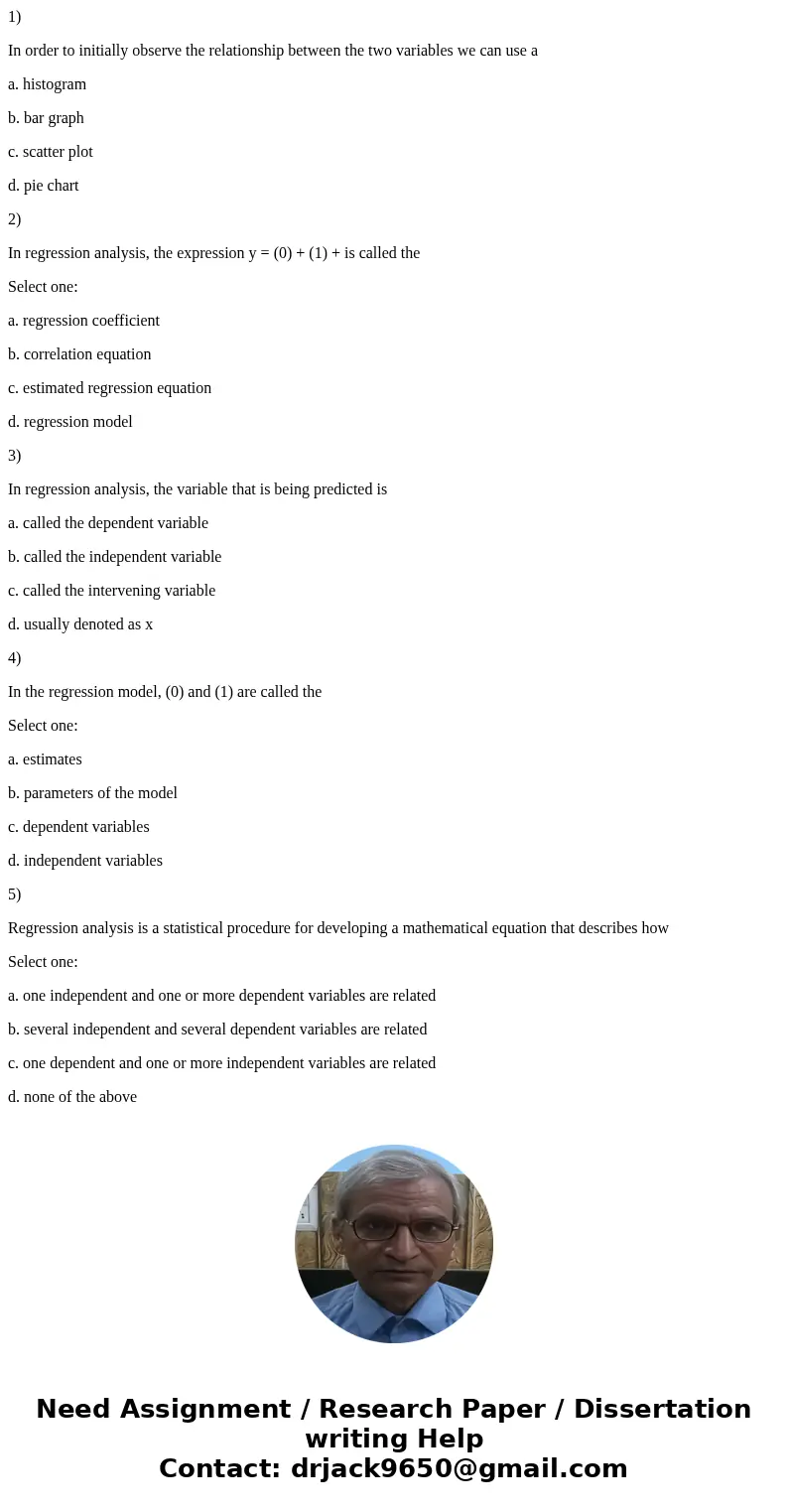
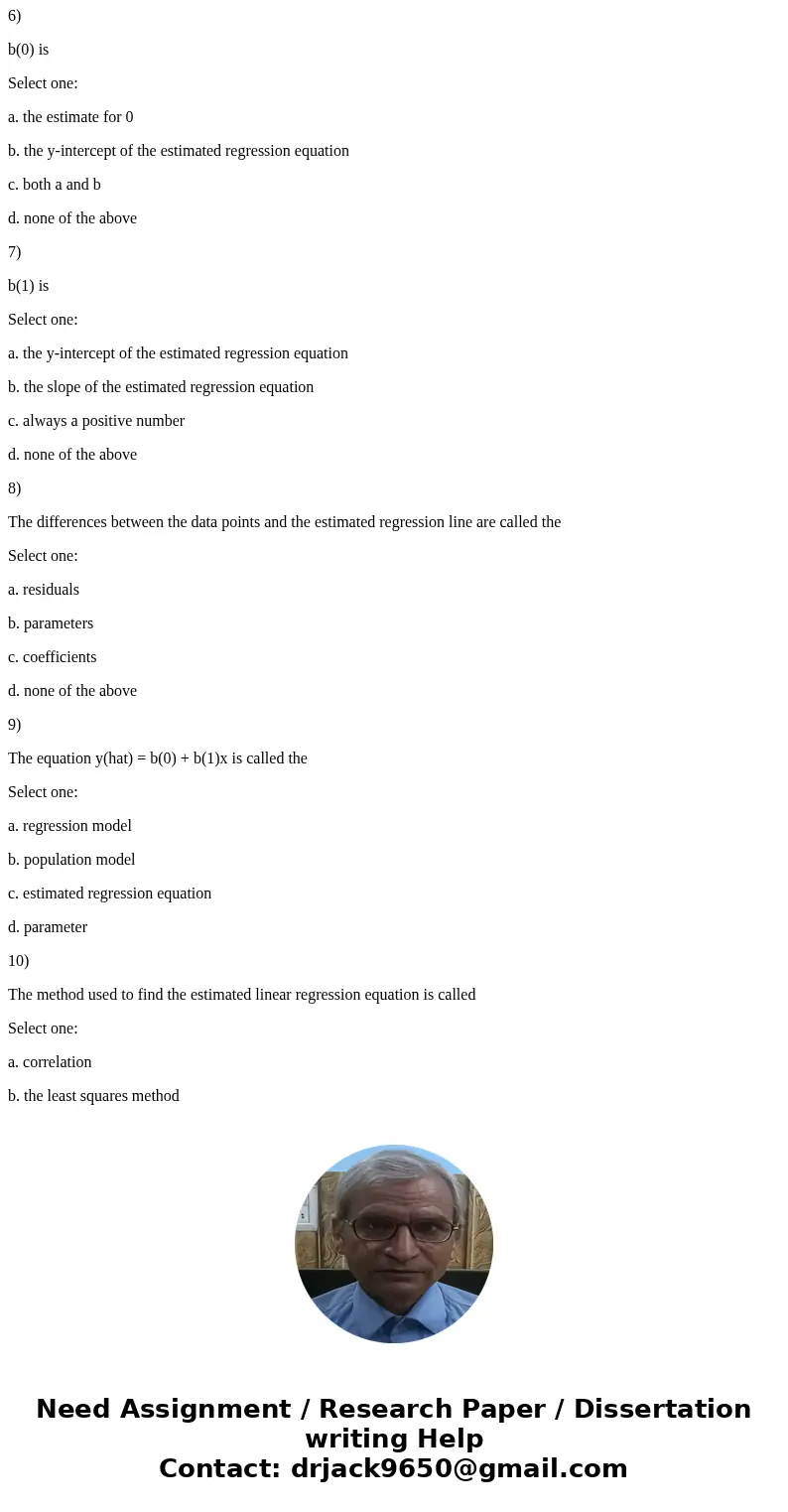
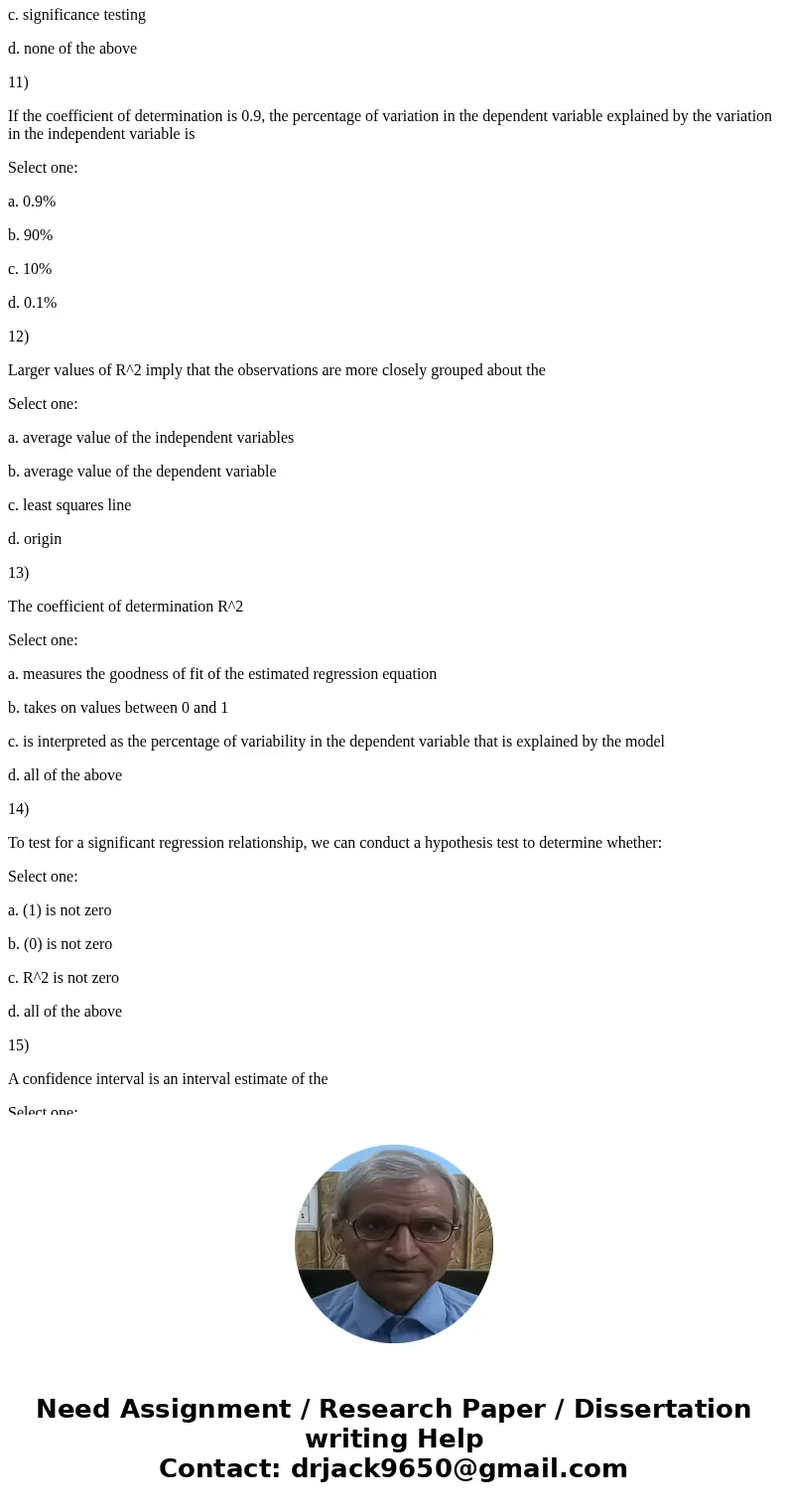
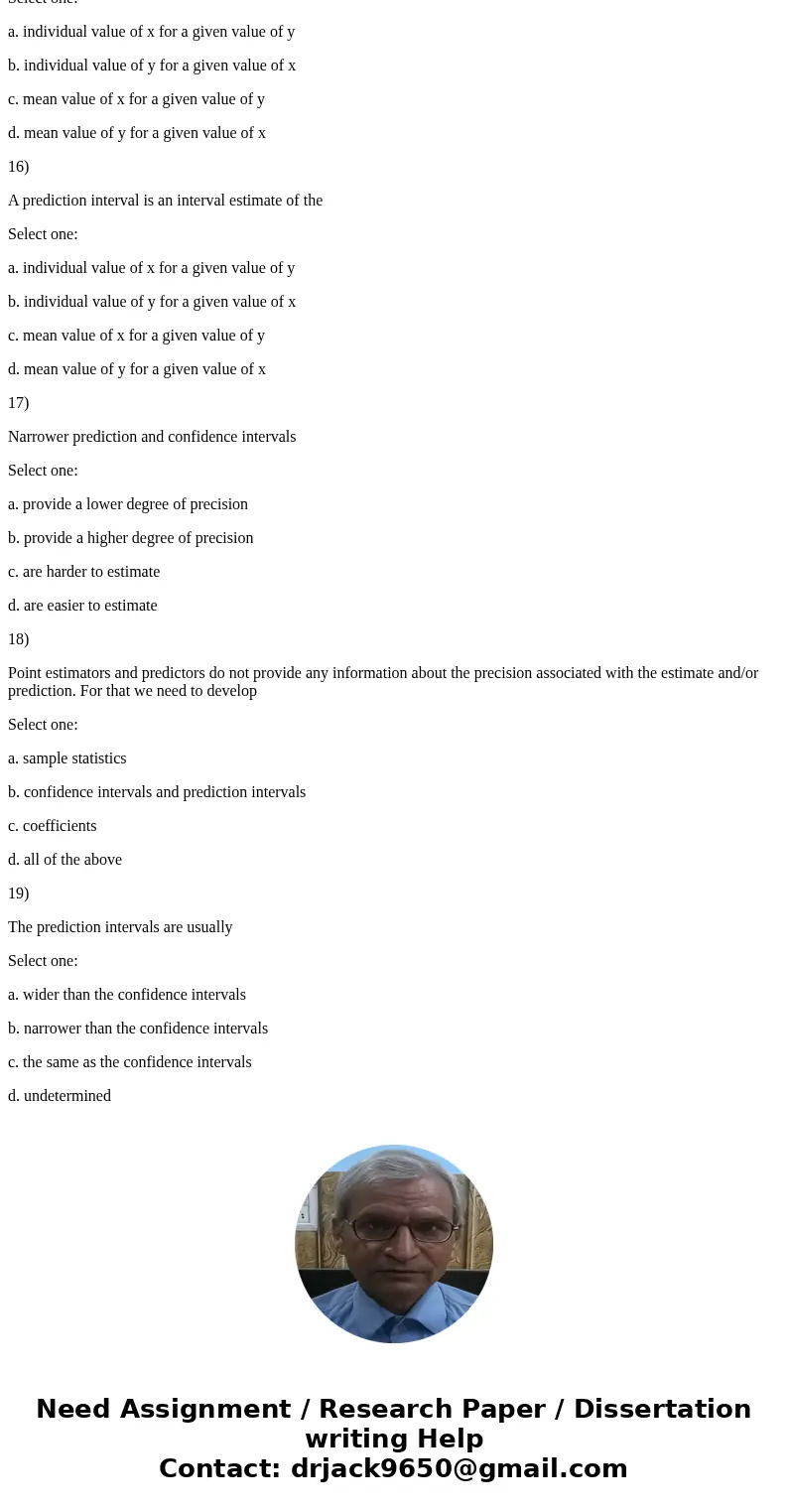
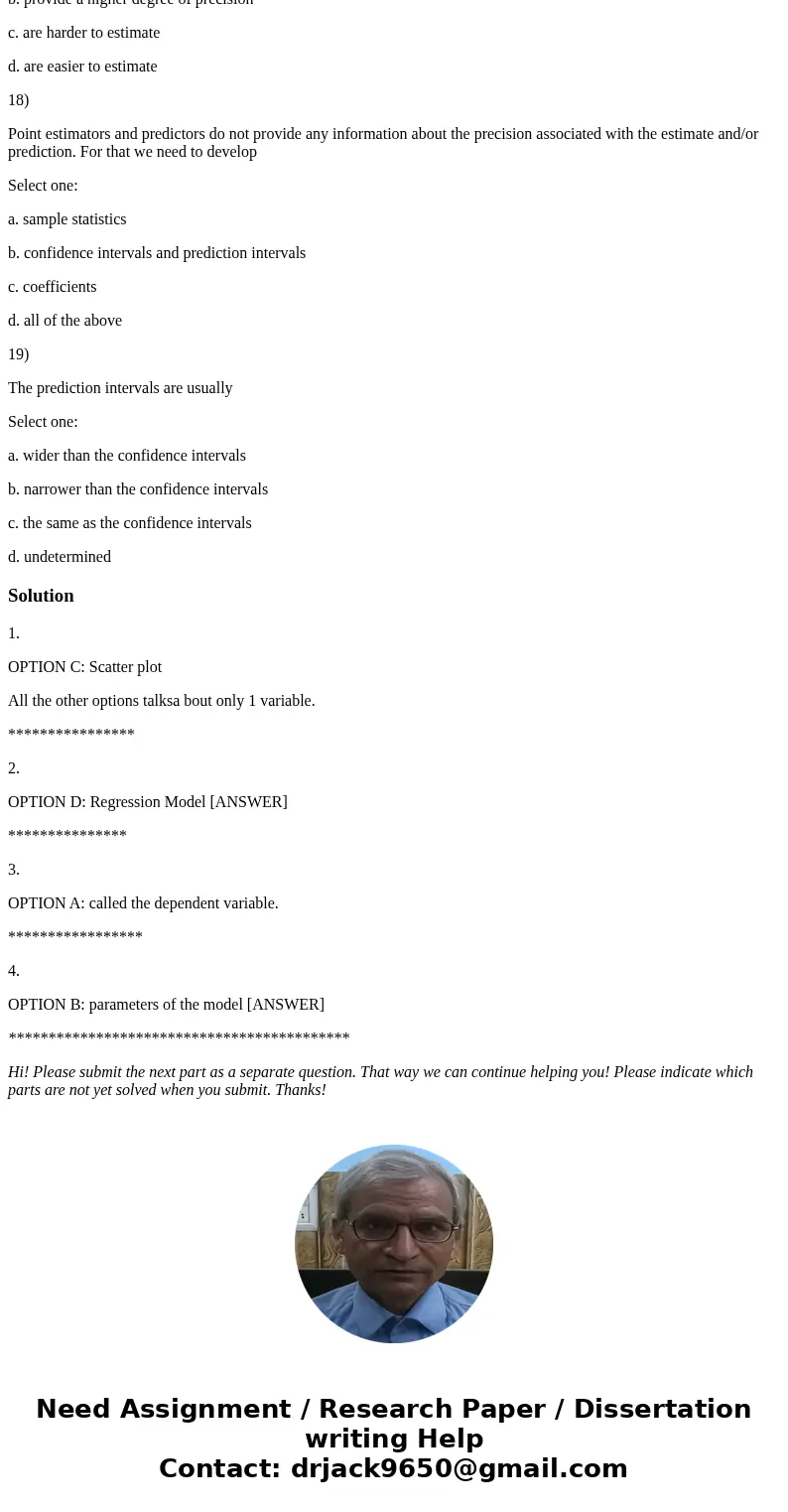
 Homework Sourse
Homework Sourse